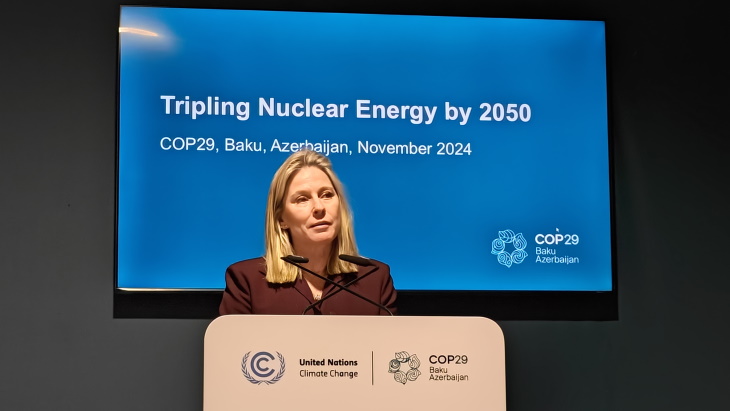Climate debate needs shared platform for renewables and nuclear
-2018.jpg)
Among topics discussed at the weeklong conference in Vienna, has been the fact the cost of building solar and wind power units may be falling, but the intermittency of their supply leads to high system costs. A number of speakers have also referred to the fact that the International Energy Agency, the World Energy Council, the UN Intergovernmental Panel on Climate Change, and the Massachusetts Institute of Technology have all produced reports recently that say that nuclear, as a source of baseload and low-carbon electricity, needs to be part of the solution not only to climate change but also to sustainable deveopment. That message is being ignored, they have noted, by many in the renewable energy industry.
Panellists at one of yesterday's sessions, titled Flexible Operation and Hybrid Energy Systems, responded to a delegate's question, How can the renewable energy sector be persuaded to discuss with the nuclear power industry the transition to a low-carbon economy? The session was moderated by Shannon Bragg-Sitton, lead for integrated energy systems in the Idaho National Laboratory's Nuclear Science and Technology Directorate.
She said: “The question is how to convince those that sometimes are competitors, to work with us. They could be afraid of being earmarked as 'not that clean' anymore for the general public and investors. This is something that we've worked with for quite some time in the United States. We need to see these technologies not as competitors, but as all equally valuable and needed to be coordinated with; where each of them has assets to bring to the table and each of them has negative aspects as well.
"In the United States we've been working across the energy sector for a few years now, with the National Renewable Energy Laboratory and my laboratory, the Idaho National Laboratory. We've been working together on how do we approach this challenge collectively and, more recently, we’ve even brought in the fossil energy lab [the National Energy Technology Laboratory], looking at how to use that resource in effectively meeting energy needs. The US in particular is a fossil-rich country and that can devastate many regions if we stop using fossil energy, so we talk about using it differently - can we take those carbon resources and convert them into higher value products, into things like plastics we use each day, instead of burning them and emitting those CO2 and other greenhouse gases.
"I think the challenge is just starting that conversation, starting that common platform; not looking at a presumed end-point of 'x' percentage of renewables, but instead looking at an end-point of emissions at a level we can all agree on, or achieving resilience that we can all agree on."
Stéphane Feutry, head of nuclear production performance at EDF - the world's biggest producer of nuclear energy and the second biggest producer of renewable energy in Europe - said, "It's true that we have to convince people - politicians and the public - that nuclear is not in competition with renewables. We are in competition with gas."
Concetta Fazio, head of unit at the European Commission’s Joint Research Centre, noted that each EU Member State decides its own energy mix. "There are some Member States that oppose nuclear and they bring forward renewables and, in this context, it is a bit more difficult then to try and integrate everything as you do in the United States," she said, responding to Bragg-Sitton. The market will influence the debate, she said, but studies into ways of integrating all low-carbon energy technologies in Europe "could be pursued more", she added.
Frederik Reitsma, team leader of SMR technology development at the IAEA, noted the discussions during the conference about system costs and the "decreased value of renewables as you install more".
He said his personal opinion and observation was: "This is not always visible to the public, but as the renewables percentages start to increase and people see that their electricity bill does not decrease, despite the very low current cost of renewables being added to grids, I think more people will ask questions and see then nuclear as part of the solution. Only then will the discussions really start. So I think market forces in the end will make it happen but that may take a bit of time."
Bragg-Sitton added: "Each unit cost for renewable energy generation is not equivalent to the previous one and that the amount can vary significantly because it’s not fully dispatchable. There's a need to understand the system costs we've heard about [at the conference] and educate people on this; that these things don't come for free and we need to understand the impacts overall."

_99697.jpg)

_53540.jpg)





_66488.jpg)


